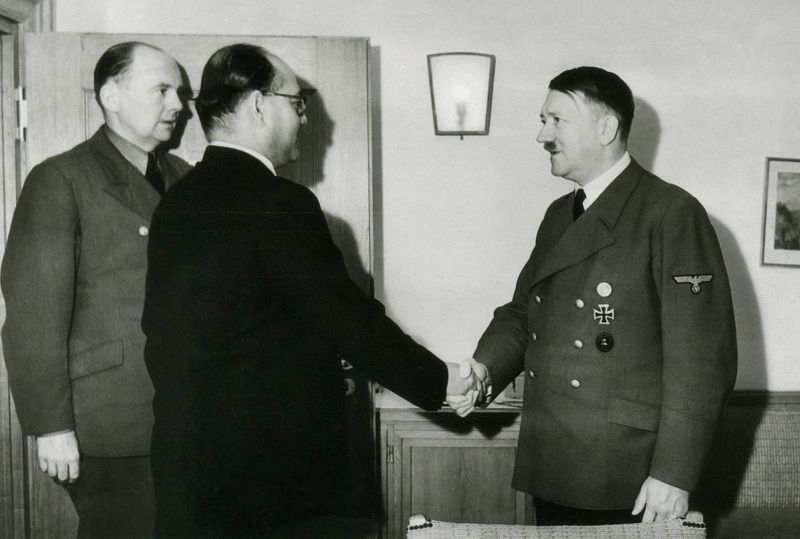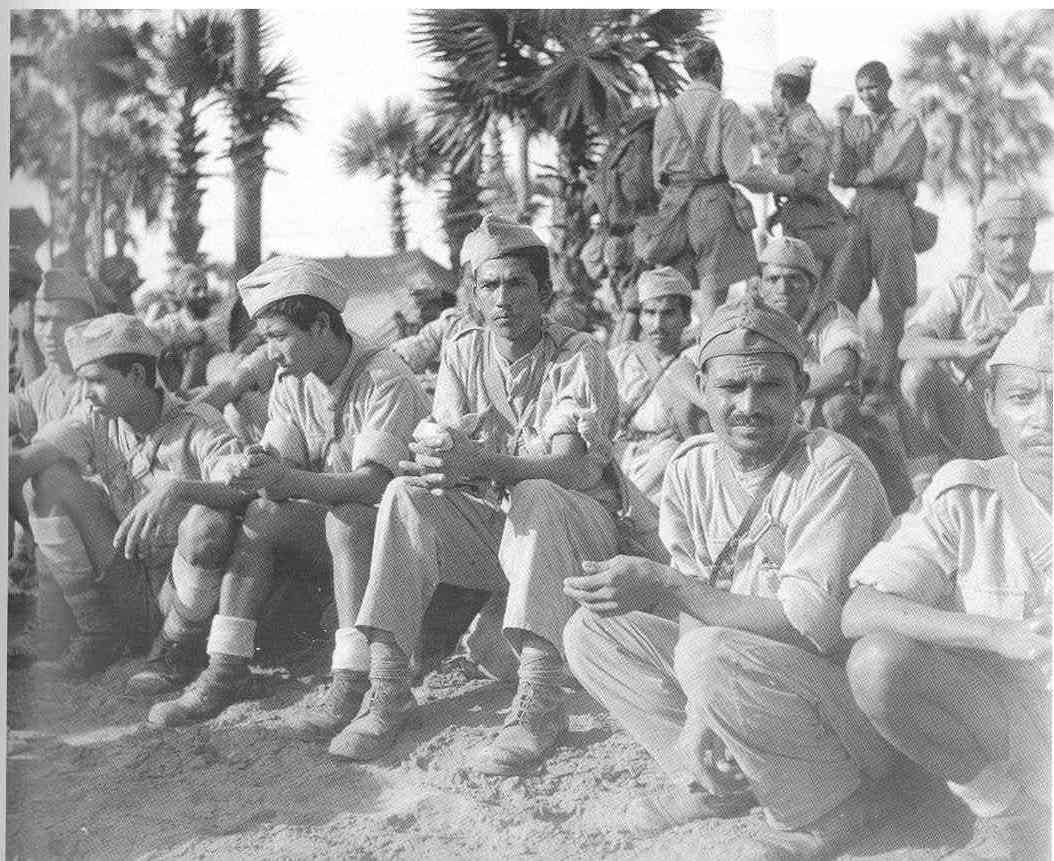Indian National Army
Enlarge text Shrink text- Gaube, K. L.
- LC manual auth. cd.
- Maruyama, S. Indo Kokumingun, 1985:
- Intiya Tēciya Rāṇuvam, INA, 1995:
The Indian National Army (INA; Azad Hind Fauj ; lit. 'Free Indian Army') was a collaborationist armed unit composed of Indians fighting under the command of the Japanese Empire. It was founded by Mohan Singh in September 1942 in Southeast Asia during World War II. It fought under the command of the Japanese military in the British campaign in the Southeast Asian theatre of WWII, with its aim to secure Indian independence from British rule. The army was first formed in 1942 under Mohan Singh by Indian prisoners of war (PoWs) of the British Indian Army captured by Japan in the Malayan campaign and at Singapore. This first INA, which had been handed over to Rash Behari Bose and Mohan Singh, collapsed and was disbanded in December that year after differences between its leadership and the Japanese military over its role in Japan's war in Asia. The INA was handed over to Subhas Chandra Bose. It was revived under the leadership of Subhas Chandra Bose after his arrival in Southeast Asia in 1943. The army was declared to be the army of Bose's Arzi Hukumat-e-Azad Hind (the Provisional Government of Free India). The INA came to be known as the puppet army of the Japanese empire. Subhas Chandra Bose named the brigades/regiments of INA after Mahatma Gandhi, Jawaharlal Nehru, Maulana Azad, and himself. There was also an all-women regiment named after Rani of Jhansi, Lakshmibai. Under Bose's leadership, the INA drew ex-prisoners and thousands of civilian volunteers from the Indian expatriate population in Malaya (present-day Malaysia) and Burma. This second INA fought under the Imperial Japanese Army against the British and Commonwealth forces in the campaigns in Burma: at Imphal and Kohima, and later against the Allied retaking of Burma. After the INA's initial formation in 1942, there was concern in the British Indian Army that further Indian troops would defect. This led to a reporting ban and a propaganda campaign called "Jiffs" to preserve the loyalty of the Sepoy. Historians consider the INA not to have had significant influence on the war. The British Raj, never seriously threatened by the INA, charged 300 INA officers with treason in the INA trials, but eventually backtracked in the face of opposition by the Congress. These trials became a galvanising point in the Indian Independence movement for the Indian National Congress. A number of people associated with the INA during the war later went on to hold important roles in public life in India as well as in other countries in Southeast Asia, most notably Lakshmi Sehgal in India, and John Thivy and Janaki Athinahappan in Malaya. The military unit was associated with Imperial Japan and the other Axis powers, and accusations were levelled against INA troops of being involved and complicit in Japanese war crimes. The INA's members were viewed as Axis collaborators and traitors by British soldiers and Indian PoWs who did not join the army, but after the war they were seen as patriots by many Indians. Although they were widely commemorated by the Indian National Congress in the immediate aftermath of Indian independence, some of the members of the INA were denied freedom fighter status by the Government of India.
Read more on Wikipedia >
 Corporate Body
Corporate Body










